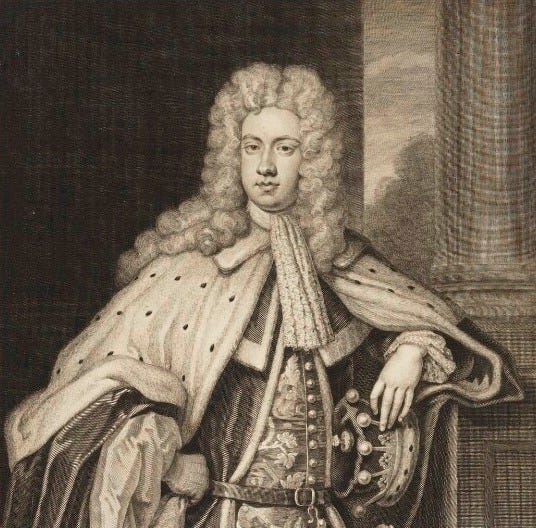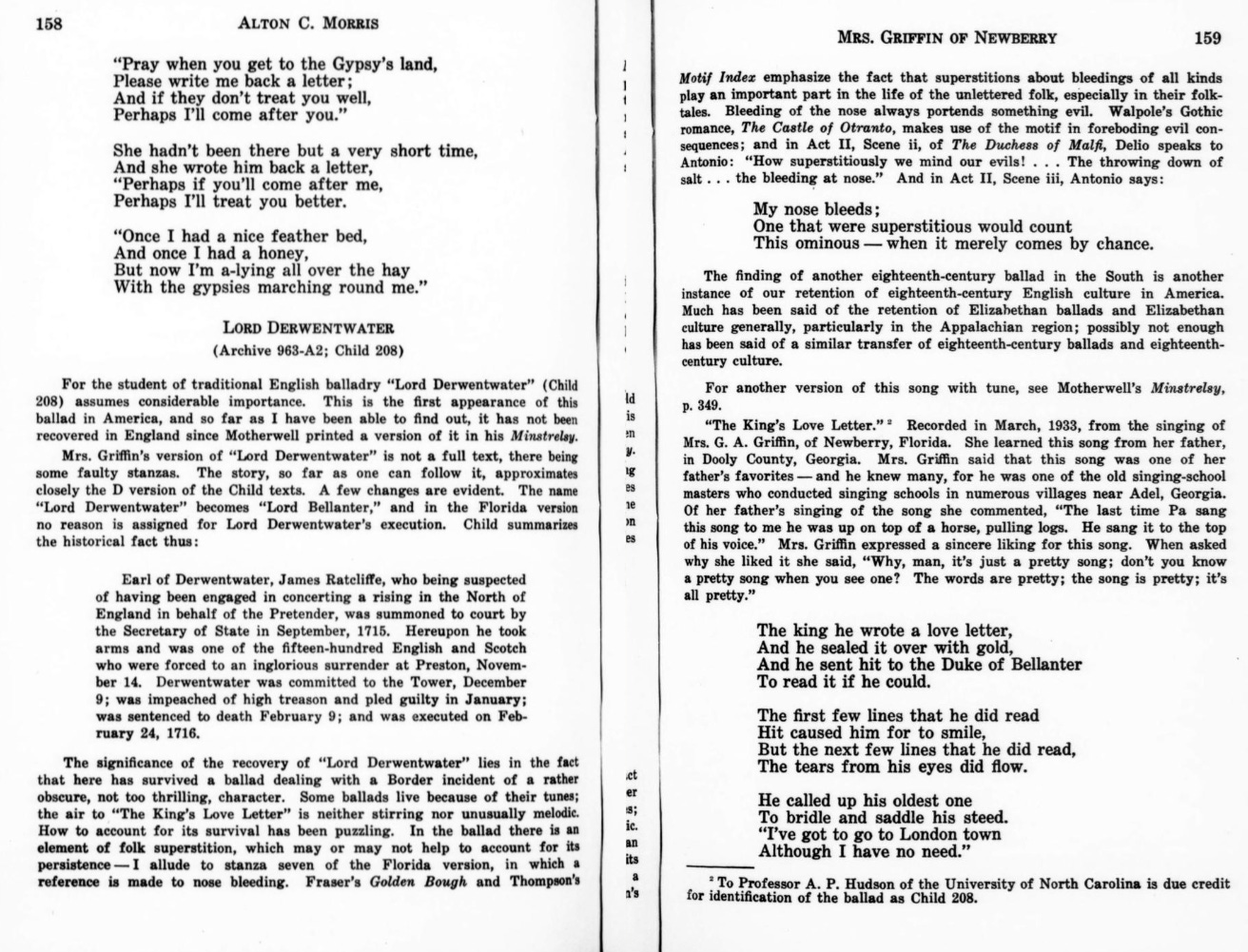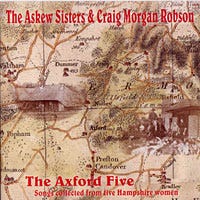ROUD 89: Lord Derwentwater
AKA: Lord Allenwater, Lord Ellenwater, The King's Love-Letter, Lord Derwentwater's Death

This tragic ballad tells the true story of the demise of James Radclyffe, the 3rd Earl of Derwentwater, who in 1715 supported the Jacobite revolution that attempted to depose the unpopular King George I in favour of James VII of Scotland. (The name "Jacobite" comes from the Latin word Jacobus, which means James.) The plan failed and the Jacobite leaders, including Radclyffe, had to go into hiding. Radclyffe was captured at the Battle of Preston in November 1715, and beheaded at Tower Hill the following February, at the age of 26. Legend has it that on the day he was executed, the rivers of his estates ran with blood. Also, on the night his body was returned to the North, the Northern Lights were said to shine brighter than they ever had before.
This was a popular ballad primarily in Scotland (by all accounts, Radclyffe was a well loved figure of his time, renowned for his kind and gentle manner) but was also found multiple times in the 19th century in England, and once in 1939 in Florida by well known ethnomusicologist John Lomax (see Music below for a wonderful source recording).
Another ballad, which is normally found under the title Derwentwater’s Farewell, tells the same story from the point of view of Radclyffe himself. This ballad is given number 2616 in the Roud index.
Music
As you can see from the Youtube playlist, this ballad has a sparse but continuous tradition up to today. The earliest recording we have was found in Florida, sung by Mrs. Georgia Ann Griffin of Newberry, Alachua, originally from Dooly County, Georgia. This was beautifully recorded by John Lomax in 1937.
Next we have Shirley Collins and her sister Dolly, whose liberal use of the harmoniflute always makes for an interesting and distinctive sound. The ballad is often called “Allenwater” which may be a corruption, or it just sounds better tripping off the tongue.
Ralph Vaughan Williams collected the song under the title “Lord Allenwater” from Emily Stears in Horsham. Amazingly, Ian A. Anderson (the erstwhile editor of now sadly discontinued fRoots magazine, and now presenter of the essential folk podcast Podwireless) turns out to be her great grandson (he had no idea he had a folk-singing antecedent until relatively recently, according to his enlightening account published here). Ian is a great performer in his own right, and in a wonderful moment of folk tradition circularity, here is Ian singing the song that his great grandmother sang to RVW in 1905.
British folk national treasure Jim Moray clearly liked this ballad so much he recorded it twice, on his albums The Outlander and Beflean. Here is the former.
I won’t miss an opportunity to hear the singing of our dear departed Paul Sartin. Here is the wonderful Dr Faustus with their version. Tim Van Eyken wrote a new verse commemorating the bright Northern Lights that accompanied Radclyffe’s departure.
Over on Bandcamp, I found a few different versions, including this interesting and dramatic piano-based version from film and video game composer Opus Overtone.
And here are a couple of bonus versions from Bandcamp:
Rare versions
In 2009, The Askew Sisters and Craig Morgan Robson released an album of traditional English songs collected by George Gardiner in 1909 from five women singers in Axford, Hampshire. Here is their version of Lord Derwentwater, sung by Sarah Morgan. Here is a clip:
The album is currently unavailable on streaming services, but I bought a copy, and so should you, from the Askew Sisters’ website.
This version of the ballad was published in the Journal of the Folk-Song Society in 1909.
Sources
Lord Derwentwater is Child ballad 208. Its entries in the Roud Index can be found here.
One of the most complete accounts of this ballad outside of Child is the account from 1944 written by folklore-collecting Floridian Alton C Morris. As well as his insightful analysis, there are some choice quotes from the singer Georgia Ann Griffin who learned it from her father:
“The last time Pa sang the song to me he was up on top of a horse, pulling logs. He sang it to the top of his voice…Why man, it’s such a pretty song; don’t you know a pretty song when you hear one? The words are pretty, the song is pretty, it’s all pretty.”
Well said, Ms Griffin.

Back in England, in 1883, Charlotte Burne published her book of Shropshire Folklore. In a rare example of folk song collecting passing the Bechdel test, it included folk songs collected by Georgina Frederica Jackson, including this one, sung by Mrs Dudley of Much Wenlock, The notes give another variation on the folkloric occurrences surrounding the death of Lord Derwentwater, namely “the sun was the colour of blood the day it happened”. Mrs Dudley had learned the song from her grandfather who would have been born just after the events of the song.

For those intrigued by Lord Derwentwater himself, a comprehensive biography was published in 1959 by British novelist and historian Ralph Arnold.

(If you don’t want to invest the time in a full book, this article by Patricia Bernstein is a good executive summary.)
The northern lights of 1716 were clearly an extreme event, clearly worthy of attributing to the death of a great man such as Radclyffe. I found a fascinating article in the Journal for the History of Astronomy from 1996 which includes these remarkable contemporaneous drawings of the event by Norwegian mathematician and cartographer Joachim Ramus in 1716.
Draft pages and audio guide
Get a preview of the pages of the as yet unpublished Sing Yonder vol. 9, and the song’s arrangement below.
Keep reading with a 7-day free trial
Subscribe to Sing Yonder: A Practical Guide to Traditional Song to keep reading this post and get 7 days of free access to the full post archives.





